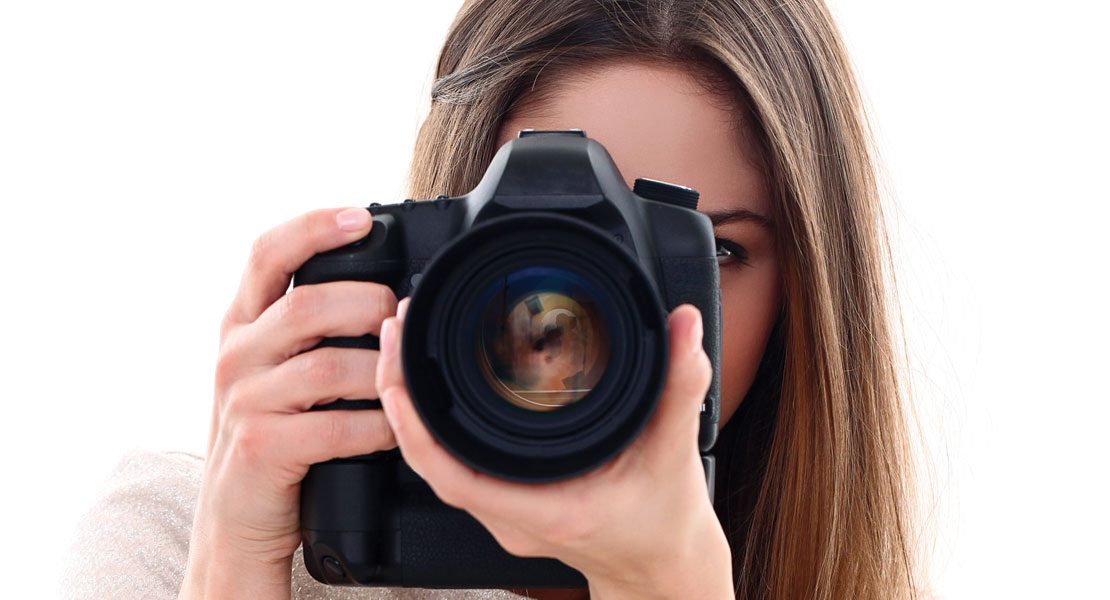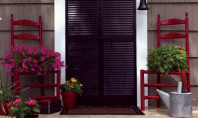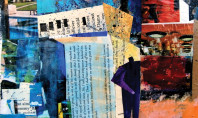Shoot Like a Pro

By Frederick Jerant
George Harrison was right: It’s been a long, cold, lonely winter.
But spring has finally sprung, bringing with it brilliant blue skies, the emergence of gaily colored blooms, and an almost uncontrollable urge to soak up some fresh air and sunshine.
That heady mixture often means we’ll be taking lots and lots of pictures – proms, informal portraits, kids at play, sweeping vistas – the possibilities are nearly endless. And continuing advances in digital technology make it ever easier to snap whatever suits your..fancy. Even in-camera phones are capable of rather sophisticated work.
But let’s face it, we’ve all taken our share of clunkers: badly focused, poorly lit, blurry, cut-off heads. You know what I mean.
Fortunately, there are some simple ways to increase your ratio of photographic hits and misses. And three local professional photographers were willing to tell me about them.
Mike Woodland, co-owner
Dan’s Camera City
Allentown
FILL FLASH
“One feature most cameras have is ‘fill flash.’ It’s useful when shooting outside, especially pictures of people,” he says. Many times, your subjects may be in partial shade; with no flash at all, some faces may be too dark. With full-on flash, the picture might be overexposed. Using fill flash helps to strike a balance, and your camera’s sensor will prevent overexposure.
MODES
These will adjust the camera’s settings in favor of your subject. For example, “scenery” mode provides greater depth of field, enabling you to maintain crisp focus well in front of and behind your main subject. It also tends to give you more vibrant colors, especially greens and blues.
On another hand, “Portrait mode provides shallower depth of field, and changes how the camera renders color. In that setting, it’s biased toward pleasing skin tones,” Woodland says.
HIGH-SPEED MEMORY CARD
Don’t rely solely on capacity when choosing a memory card, Woodland cautions. Its performance rating is important, too. A Class 2 card transfers at least two Mb of data per second; a Class 10 card can handle five times that amount. “New 24-megapixel cameras can shoot five or six frames-per-second,” he says. “If you’re trying to keep up with kids in motion, a lower-class memory card might not be able to handle that level of input.”
COMPOSITION TIPS
Woodland suggests using the “rule of thirds” to obtain more visual interest. “In most situations, you don’t want to have your subject in the middle of the frame,” he says. “Instead, divide the picture into thirds, horizontally and vertically, and place important elements where those imaginary lines intersect.”
Portraits of youngsters benefit from simple backgrounds. “Some people just take kids outside, sit them down and shoot. You should be aware of what’s behind them. Look for a non-distracting background, something that can just blend in. It can make the difference between a photo for display and one that’s just a snapshot.”
Ryan Hulvat, owner
Ryan Hulvat Photography
Bethlehem
KNOW YOUR CAMERA AND SHOOT LIKE CRAZY
It sounds like a “duh!” moment, but Hulvat urges you first to become very familiar with your equipment. “Carrying the manual is a sure sign that you don’t know how your camera works. You want to be ready when magic happens, instead of trying to figure out how to set the f-stop.” And don’t hesitate to shoot whatever strikes your fancy. “The more pictures you take, the better you’ll become,” he says.
MAKE IT PART OF YOU
Because digital photography has no expenses for film or developing, Hulvat suggests taking your camera everywhere. “You can use your camera the way an architect uses a sketch pad,” he says, recording ideas that you might explore later. Keep a journal, too, noting times of day, equipment settings and so on. Review your photos against your notes, and you can start to develop a sense of what works and what doesn’t.
REMEMBER TO PUSH BACK
When shooting landscapes, Hulvat says, it’s common to end up with photos that lack apparent depth: fields, foliage and mountains seem to occupy the same plane. A simple solution is to use “repoussoir,” a French term that roughly means “to push back.” “Try to include a tree or another object in the right or left foreground, not dead-center,” Hulvat says. “It will draw the viewer’s eye into the picture, and create an illusion of depth.”
PLAN WHEN YOU CAN
Many of us grab the kids and line ‘em up just before we snap. But a better approach is to scope out your surroundings (when you can, of course). Consider where they’ll stand, how the light will strike, and how you want them arranged. “It also gives you a chance to experiment with things,” he says. “I’ve been in the business over 20 years, and I still do this.”
Jeff Sabotta, owner
Sabotta Imagery Photography
Quakertown
WET AND WILD
Because many cameras are water- and shock-resistant, photographers’ horizons are broader than ever. “You can go down a water slide with your kids and capture their in-the-moment reactions,” Sabotta says. “If they’re learning to swim, you can take your camera in the pool and get close to the action.” These features are especially handy at the beach. Instead of just standing on the sand – far removed from the breaking waves – you can wade right into the surf.
EXPLORE YOUR PHONE
Many newer cell phones offer outstanding photo capabilities. In fact, he says, “Some of my colleagues use them for personal photo projects. They later use built-in apps and other software to create little works of art, and so can you.” If they’re sufficiently abstract, these manipulated images can start new conversations, as viewers try to figure out what your original subject was.
CLOUDY DAYS ARE OKAY
Although overcast days may make you feel a bit gloomy, don’t pack your camera away. “Those can actually be the best days for taking photos,” Sabotta says. The cloud cover provides soft and even light, so you won’t have to dance around your subjects, trying to avoid the pesky shadows that appear on bright, sunny days.
OVER, UNDER, SIDEWAYS, DOWN
When photographing a still life – flowers, for example, or an interesting rock formation – we often just face it head-on and click. But Sabotta suggests taking a 360-degree approach. Stand directly over the subject, or lie down and shoot upward. Move around and try different sides, different angles. “People are accustomed to seeing everything at once,” he says. “Showing a different perspective can present really interesting images.” As an example, he cites the Eiffel Tower. Shooting upward will capture the monument’s essence: its intricate ironwork.
Shooting in your back yard is okay, but you’ll often want something more dramatic. We asked our pros to suggest some of their favorite photographic sites in the Lehigh Valley.
• Allentown and Bethlehem Rose Gardens. Plenty of flowers for photo settings, and extreme close-up work.
• College campuses, for interesting architectural subjects.
• Lockridge Park in Alburtis features 150-year-old ruins of the Lock Ridge Iron Works. In early spring, the grounds are awash in bluebells.
• Downtown Easton, where you’ll find plenty of crusty urban buildings for backdrops.
• Burnside Plantation in Bethlehem, for barns, horses and other rural settings.
• Hawk Mountain – stand at a higher elevation, and see sweeping vistas below.

















